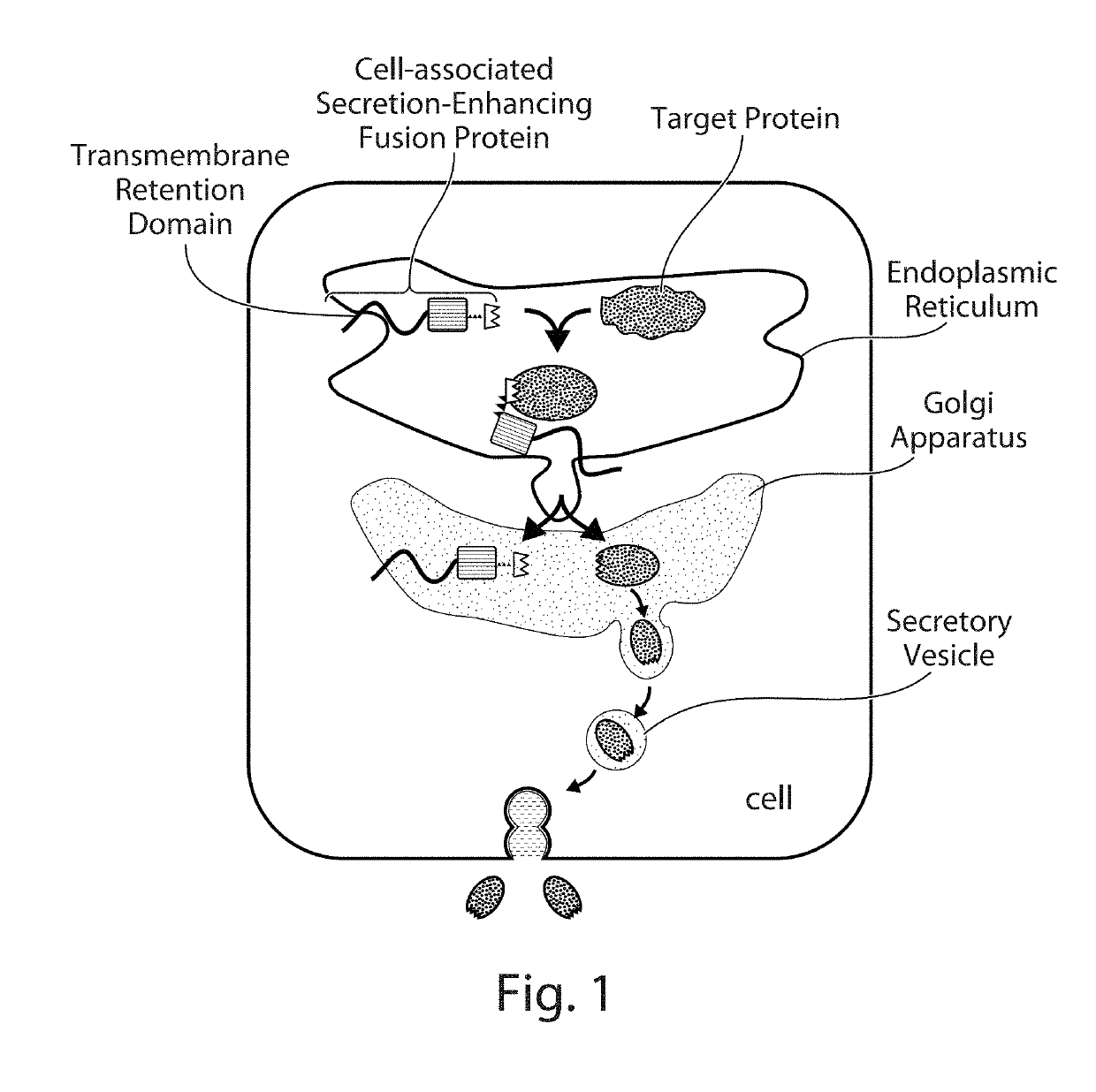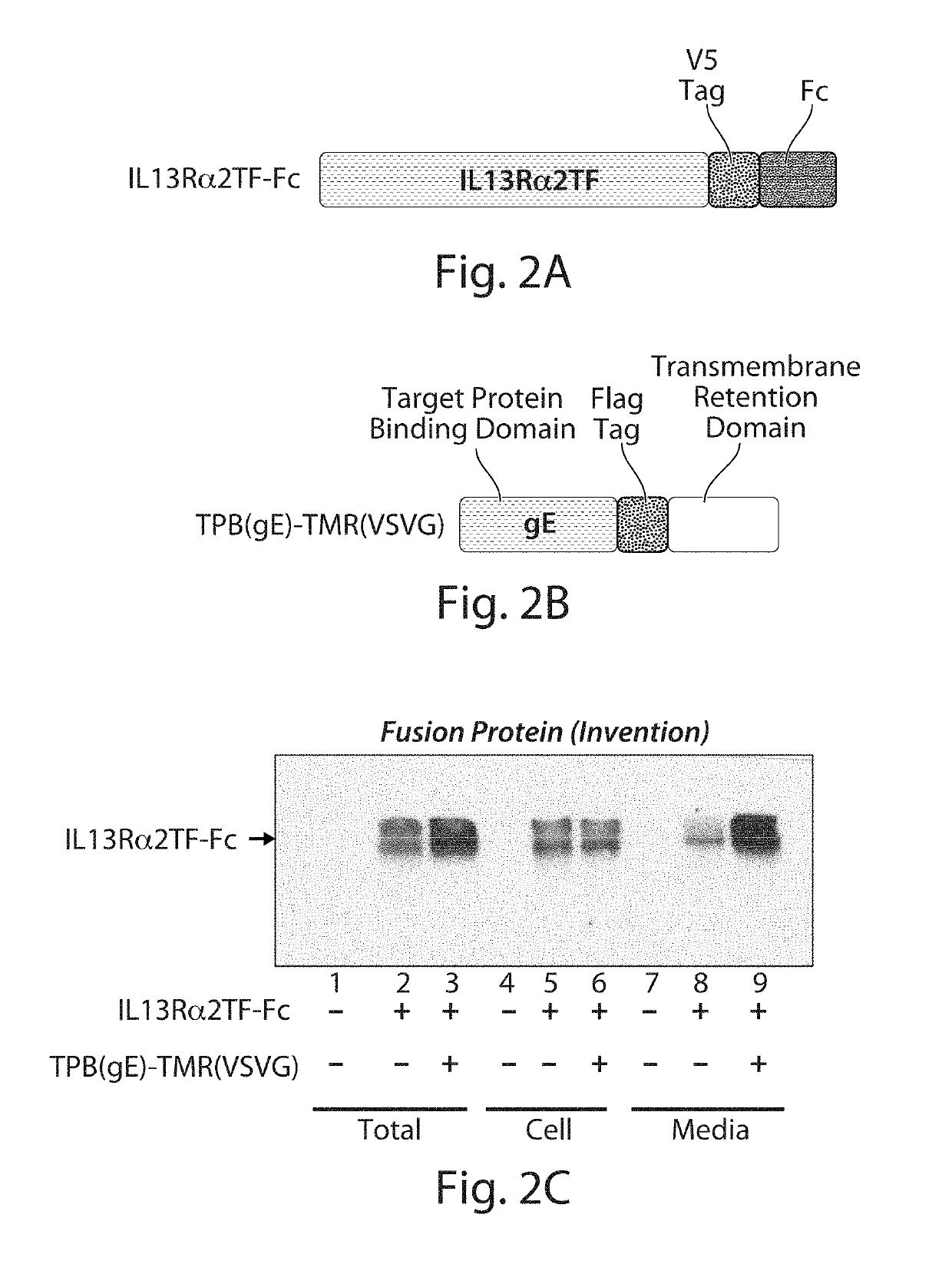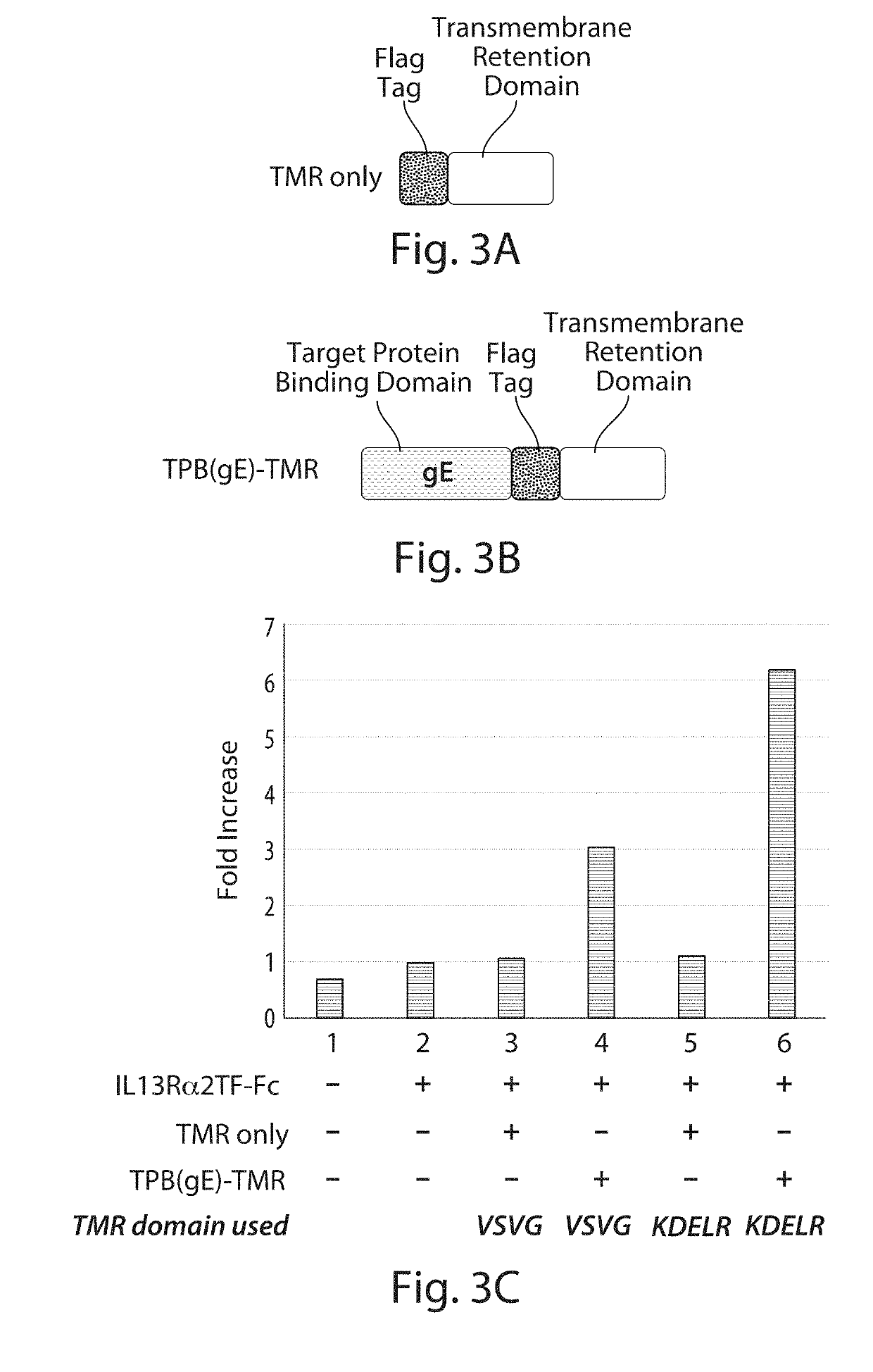Cell-Associated Secretion-Enhancing Fusion Proteins
a technology of fusion proteins and target proteins, applied in the field of engineered proteins and protein expression, to achieve the effect of enhancing the enhancing the secretion level of a target protein
- Summary
- Abstract
- Description
- Claims
- Application Information
AI Technical Summary
Benefits of technology
Problems solved by technology
Method used
Image
Examples
example 1
Compositions and Methods for Enhancing Levels of Secretion of Target Proteins Using a Co-Expressed Cell-Associated Secretion-Enhancing (CASE) Fusion Protein Retained in the Host Cell.
[0291]Expression vector plasmids were constructed for expressing fusion proteins for enhancing the level of secretion of specific proteins (target proteins). As described below, fusion proteins were usually linked to a standard epitope tag for easy identification or isolation using a corresponding anti-tag antibody and standard immunoblot (such as dot blot, Western blot) assays.
[0292]A DNA linker molecule having a nucleotide sequence containing various restriction enzyme sites for cloning heterologous DNA molecules was produced by annealing two single-stranded DNA molecules having the sequences shown below (5′ to 3′):
(SEQ ID NO: 129)AGCTTGGTACCGGATCCGAATTCGATATCGCGGCCGCTCTCGAGTCTAGAGGGCCand(SEQ ID NO: 130)CTCTAGACTCGAGAGCGGCCGCGATATCGAATTCGGATCCGGTACCA.
[0293]The annealed linker molecule was then inserte...
example 2
Enhanced Level of Secreted IL13Rα2-Fc Target Protein
[0308]In this experiment, an IL13Rα2-Fc target protein (trap molecule) was used as a representative example of an Fc target protein. The IL13 receptor, IL13Rα2, is a membrane protein that binds to interleukin-13 (IL13) and mediates allergic inflammation. The IL13Rα2 receptor protein is known to be an unstable protein in a mammalian cell due to the difficulties of protein folding (Genetic Engineering &Biotechnology News, 28(5) (2008)). Part of the expressed IL13Rα2 protein is digested on the cell surface and shed into the extracellular space. The truncated form that is shed from the cell surface is approximately the N-terminal 320 amino acids of mature IL13Rα2. This truncated form of IL13Rα2 still possesses the ability to bind IL13, but cannot transmit a signal to the cell owing to the absence of transmembrane and cytoplasmic regions of the full-length IL13Rα2 protein. Therefore, the truncated form of IL13Rα2 has been used as a type...
example 3
Comparison of Enhanced Levels of Secreted IL13Rα2TF-Fc Target Protein Using Fusion Proteins with Different Transmembrane Retention (TMR) Domains
[0313]This experiment compared the level of IL13Rα2-Fc target protein secreted from a host cell when co-expressed with either of two fusion proteins that differ in their transmembrane retention (TMR) domains or when co-expressed with either of the component TMR domains of the fusion proteins.
[0314]The V5-tagged IL13Rα2TF-Fc target protein used in this experiment was the same as described in Example 2 and Table 4 above.
[0315]FIG. 3A shows a general diagram of a nucleic acid construct comprising a segment encoding a transmembrane retention (TMR) domain that was augmented at its 5′ end with a segment encoding a Flag epitope tag for easy identification of the expressed protein using a standard anti-Flag antibody.
[0316]Two different Flag-tagged TMR polypeptides were used in this study as “TMR only” polypeptides. One of the Flag-tagged TMR polypep...
PUM
| Property | Measurement | Unit |
|---|---|---|
| pH | aaaaa | aaaaa |
| pH | aaaaa | aaaaa |
| pH | aaaaa | aaaaa |
Abstract
Description
Claims
Application Information
 Login to View More
Login to View More - R&D
- Intellectual Property
- Life Sciences
- Materials
- Tech Scout
- Unparalleled Data Quality
- Higher Quality Content
- 60% Fewer Hallucinations
Browse by: Latest US Patents, China's latest patents, Technical Efficacy Thesaurus, Application Domain, Technology Topic, Popular Technical Reports.
© 2025 PatSnap. All rights reserved.Legal|Privacy policy|Modern Slavery Act Transparency Statement|Sitemap|About US| Contact US: help@patsnap.com



